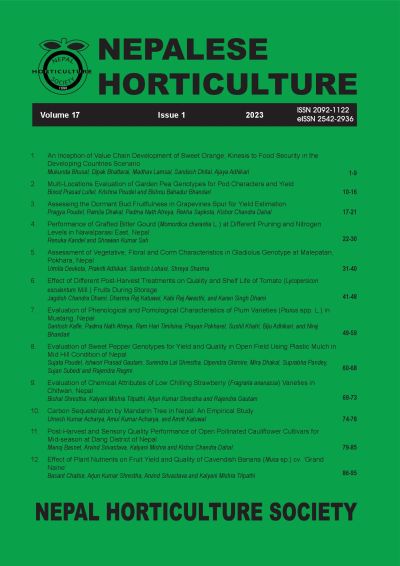Carbon Sequestration by Mandarin Tree in Nepal: An Empirical Study
DOI:
https://doi.org/10.3126/nh.v17i1.60637Keywords:
Carbon, Mandarin, Nepal, SequesteredAbstract
Nepal has immense potential of fruit tree cultivation. These fruit trees are a good source of carbon reserve. But these fruit orchards do not account for carbon trade in Nepal. This could be due to limited information on carbon sequestered by these commodities. An empirical study on the amount of carbon sequestered by mandarin trees at Dhankuta was conducted using both seedling and grafted 70 mandarin trees of 8-50 years of age. The amount of carbon sequestered was 0.24-1.22 ton/ha by native mandarin variety cv. Khoku local in Dhankuta district Nepal. The rate of carbon accumulation is around 0.02 t/ha/yr. This kind of study needs to be carried out in different parts of the country to make robust estimation using different types of citrus species and their varieties. Further, government of Nepal should consider fruit orchard while doing carbon trading business.
Downloads
Downloads
Published
How to Cite
Issue
Section
License
Copyright (c) 2023 Nepalese Horticultural Society

This work is licensed under a Creative Commons Attribution-NonCommercial 4.0 International License.
© Nepalese Horticultural Society

